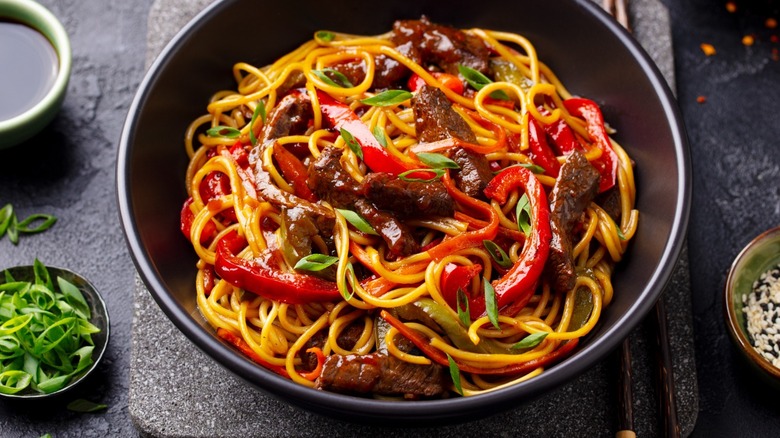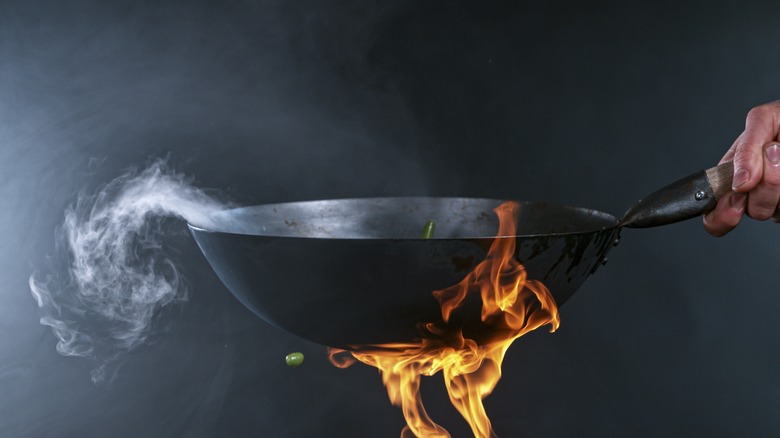The Stir Fry Mistake You're Probably Making, According To Chefs
The centuries-old Chinese culinary technique known as stir frying — quickly cooking bite-size pieces of food (usually in a wok) over high heat — is popular all over the world, known for yielding crunchy and colorful dishes while preserving the flavors, freshness, and nutrients of the ingredients. Stir-fried recipes, from chicken and noodles to beef and broccoli, are easy to make at home once you've gotten a handle on the technique, which involves a combination of stirring and shaking the pan. However, chefs warn home cooks not to commit the all-too common stir fry mistakes.
"A lot of people get impatient, and so they immediately add their ingredients, say the protein, into a pan before it's even hot enough. And if you do that, you ruin your stir-fry from that moment, and you can't fix it," San Francisco chef and "Chef Dynasty: House of Fang" star Kathy Fang told Mashed. So how hot should your pan be?
The importance of wok hei and cold oil
You may have heard Uncle Roger getting worked up about wok hei, and he's got a point. Wok hei — which means "breath of a wok" in Cantonese — entails preheating the wok to smoking point and is a crucial step in Chinese cooking. Note that this principle is also applied in other Asian countries. Jazz Singsanong, chef-owner at Los Angeles' Southern Thai mainstay, Jitlada, stressed to Well+Good the importance of starting with "a piping hot wok" before adding any ingredients. Chinese American celebrity chef Ken Hom further expounds that cold oil should be added to the hot pan, then heated for a minute before your cooking really begins.
Since the key here is "quick cooking," Singsanong says that the ingredients should be tossed around continually for just three minutes. She warns against stir-frying for longer, especially at a lower temperature, as this will overcook the food and make it overly soft. Similarly, be sure not to crowd the pan with too many ingredients. For the tastiest, most crisp-tender stir fries, it's best to cook your meat and veggies in smaller batches to maintain temperature control and the obligatory quick stirring.

